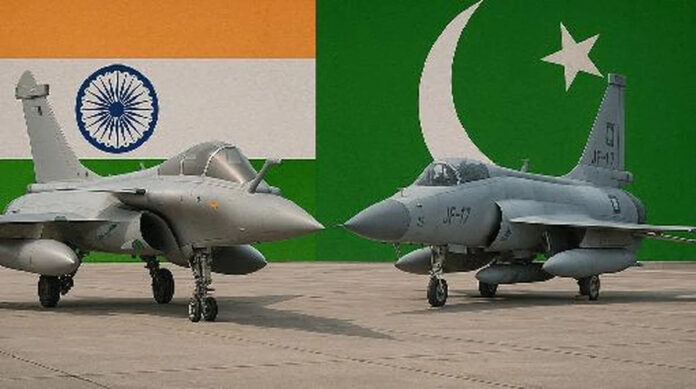Between 1:05 am and 1:30 am on May 7, the Pakistan Air Force achieved a major airpower victory. In what is now a historic moment in air combat, a PAF J-10C shot down an Indian Rafale jet. This marks the first-ever confirmed Rafale downing in combat, and no other air force has done it before.
The Rafale, made in France by Dassault Aviation, is a 4.5-generation multirole fighter. Each unit is worth about $120 million. The J-10C, in contrast, costs just $40 million. That’s nearly a third of the price. But in this dogfight, price didn’t matter—performance did.
This wasn’t just a single skirmish. It was a game-changer in military aviation. For Pakistan, it’s a major strategic win. For India, it’s a harsh reality check. For global defense analysts, it signals a new era. The belief that only Western-built jets dominate the skies is now in doubt.
The following day, Dassault Aviation’s shares fell 6% on the Euronext Paris stock exchange. That’s a big drop. Defense stocks usually react to long-term contracts, not battlefield events. But this Rafale downing shook investor confidence hard.
Meanwhile, AVIC—the Chinese company behind the J-10C—saw its stock shoot up 38% on the Shenzhen Exchange. The market spoke loud and clear. Investors now view China’s J-10C as a powerful, proven combat aircraft.
This battle proved something big. A Chinese-made fighter took out a Western flagship jet in a real dogfight. Yes, the Rafale downing is not just a tactical event—it’s a signal to the world. Western air dominance is now vulnerable. And China’s airpower has arrived.
The Rafale’s advanced Meteor missile, worth $2 million, was beaten by the Chinese PL-15, priced at just $1 million. That’s not just economics—it’s doctrine. The “first-to-lock, first-to-kill” approach may now matter more than stealth or agility in future air battles.
The PAF didn’t just win with a jet. It won with a system. Radar, data links, missiles, and warfighting doctrine all worked together. Pakistan’s focus has shifted from just aircraft to full-spectrum kill chain superiority.
India’s air superiority game plan is now exposed. The Rafale downing was not just a tactical blow—it was a strategic embarrassment. The Rafale is India’s pride, equipped with elite sensors, EW systems, and long-range missiles. Yet it was neutralized.
Why couldn’t the SPECTRA suite save it? Why didn’t it jam or evade threats? These questions now haunt the Indian Air Force. The loss suggests that the IAF may be behind in adopting next-gen combat doctrines. Will it push them to explore unmanned systems or disperse assets? Maybe. One thing is clear: the current structure isn’t enough.
This Rafale downing will cause ripple effects. First, it gives the J-10C real credibility. It can now be seen as a serious match for Western jets like the Eurofighter, F-16V, or even the Rafale itself. Second, developing nations may now rethink their fighter jet shopping lists. Third, China’s arms sales will likely get a big boost.
Air combat is evolving. Stand-off weapons are now the norm. But more than that, network-centric warfare has arrived. The PAF used a full-spectrum, integrated system—sensors, shooters, comms—all working in sync.
The biggest takeaway from this Rafale downing is simple: The platform alone doesn’t win. Victory comes from a stronger kill chain, smart pilots, and seamless coordination.
Let’s not forget the human element. The PAF pilots played a huge role. Their training, quick decisions, and air combat skills made the difference. They combined textbook precision with real-time battle instincts. Their use of high-G maneuvers and multi-domain warfare shows their mastery.
So, this wasn’t just machine vs. machine. It was brains, nerves, and elite training that tilted the fight. That’s what gave Pakistan the edge. This Rafale downing will be remembered—not just for the fall of a jet, but for the rise of a new airpower order.


